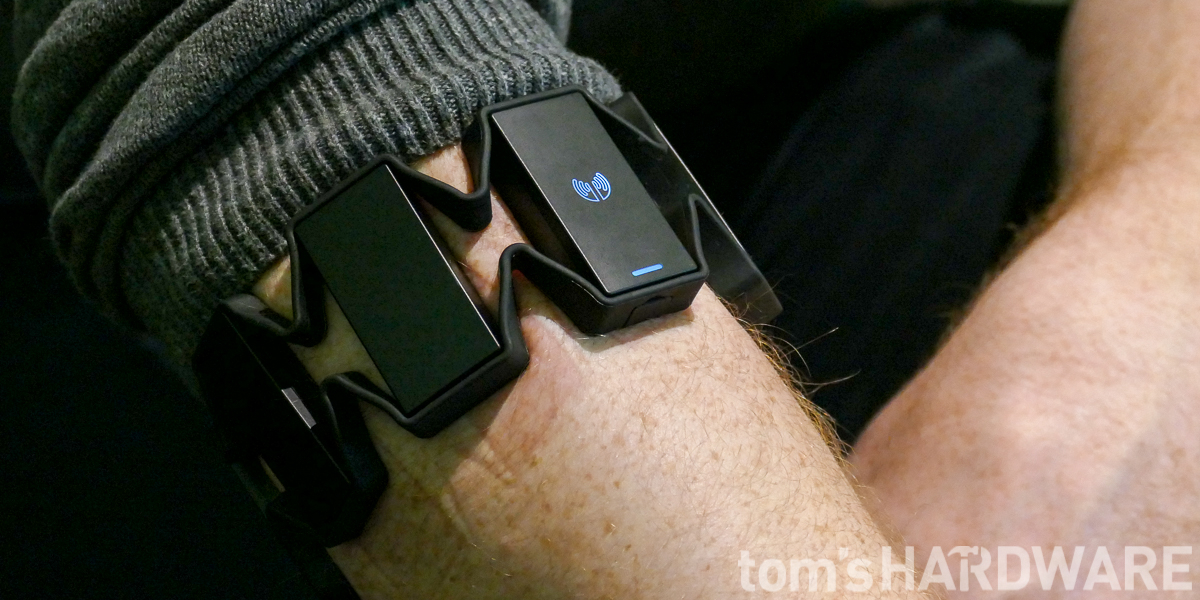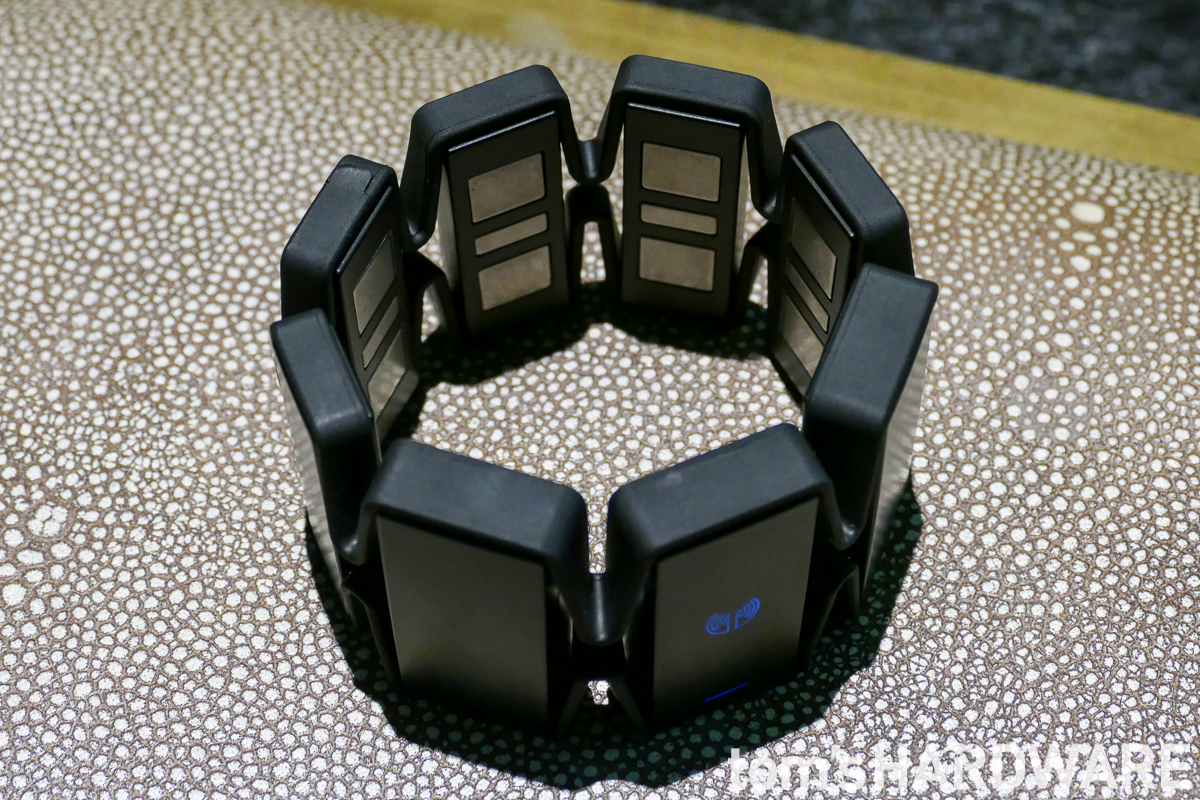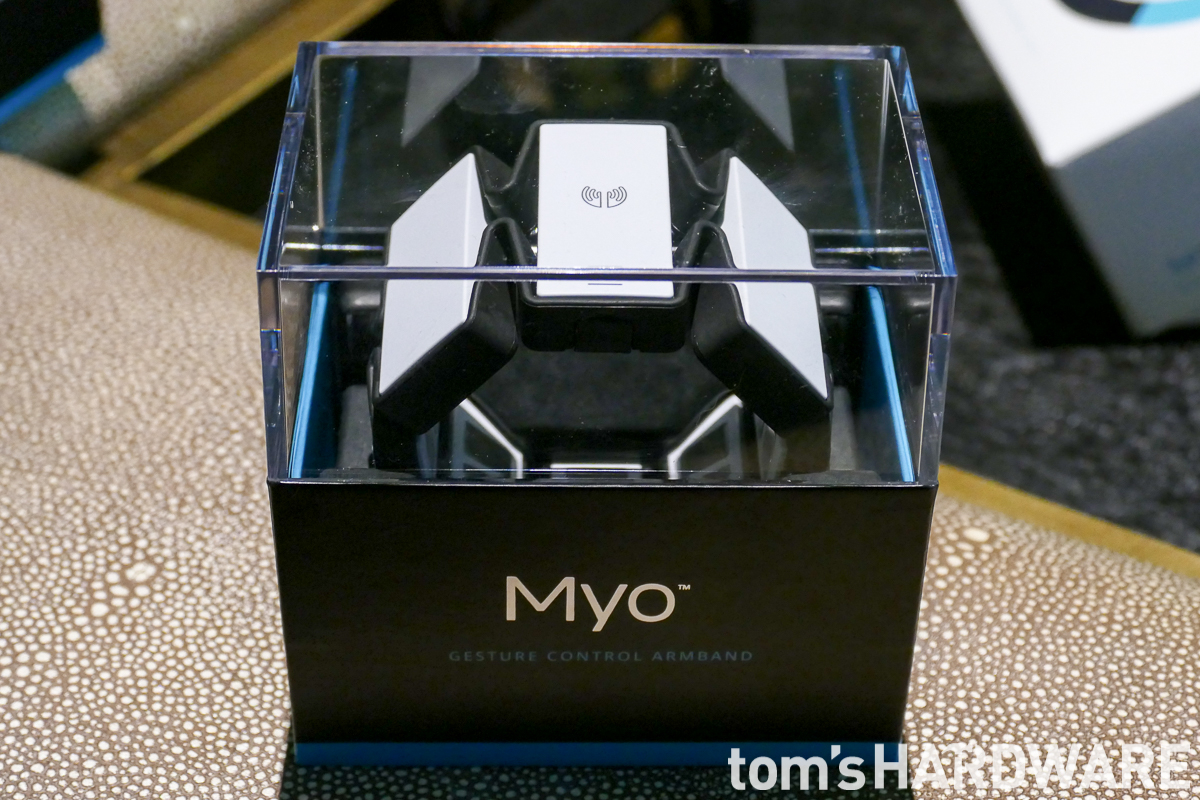Thalmic Labs Myo Armband Interview And Hands-On
This year at CES we met with red-hot startup Thalmic Labs to see its Myo Armband in action. The Myo uses both motion and gestures to control digital devices—anything from games and applications on your PC to physical devices such as quadcopters or the lights in your living room.
Thalmic Labs, based in Waterloo, Ontario, Canada, was founded in 2012 by three University of Waterloo Mechatronics Engineering program graduates: Matthew Bailey, Aaron Grant and Stephen Lake. Unlike many startups, Thalmic Labs didn't take the Kickstarter route, instead raising the funding needed to develop the Myo through being part of the Y Combinator startup incubator and then successfully raising additional venture capital.
From the very beginning, the young company started taking pre-orders with no up-front payment for the Myo on its website, which allowed it to gauge the level of interest in the device without requiring people to invest money. Luckily for them, the interest has been quite high, and since Thalmic Labs was founded it has rapidly grown in size.
Being based in Waterloo, Ontario, the company has managed to acquire a lot of former BlackBerry talent, and it's interesting that instead of outsourcing its hardware production to China, every Myo Armband, including most of the components inside, is manufactured at its facilities in Canada. Stephen Lake, co-founder and CEO of Thalmic Labs, told us that controlling every aspect of the design and production of the Myo, end-to-end, is important for maintaining quality. In the interview below, he talked more about how the Myo works, Thalmic Lab's history, and what it has planned for 2015.
Since 2013, Thalmic Labs has sold about 1,000 of the Myo Alpha Units to developers. In the summer of 2014, it released the production version of the Myo, which has accumulated more than 50,000 pre-orders so far. Thalmic Labs told us that it has already delivered roughly half of the pre-ordered production units, and it expects to ship the remainder over the next few months. Once the pre-orders are fulfilled, it will begin selling the Myo on Amazon.
In addition to talking with Stephen, we also got to learn how the Myo works and test it out. The Myo uses a combination of accelerometers, gyroscopes and EMG muscle sensors to use the motion of your forearm and gestures made by your hand for device control. The "traditional" motion sensors are used for motion control. For example, you can move your arm to control the movement of a spaceship in a game or the direction a drone flies in. The EMG sensors are used to read the muscles in your forearm to determine what gesture your hand is making, be it a fist to stop the previously-mentioned drone's movement or the palm of your hand moving left or right to control a PowerPoint presentation.
In our demo, Thalmic let us use the Myo to control the Sphero Ollie robot toy, play the PC game Race the Sun, and control the lights in the room, which were connected to a SmartThings hub. You can see the Myo in action in the video below.
Get Tom's Hardware's best news and in-depth reviews, straight to your inbox.
When Matt, our Mobile Editor, first tried the Myo, it had difficulty reading his hand gestures. Perhaps two days without sleep or much to eat were affecting the muscle signals in his arm. After a brief training routine to better calibrate the Myo to Matt's physiology, which shouldn't be necessary for most people, he was up and running.
For Myo to recognize gestures, you first need to engage its listening mode by tapping your thumb and forefinger together. Myo will go back to sleep after two seconds if no gestures are detected. This allows you to wear the armband for other activities without it detecting spurious gestures.
Matt didn't fare well controlling the Sphero Ollie robot, promptly getting it stuck under a cabinet and then randomly running into things around the room. The control issues were partly due to Matt's unfamiliarity with Myo and partly due to the Bluetooth controlled robot's schizophrenic personality brought about by a low battery.
Playing the PC game Race the Sun was far more enjoyable. Simply by swaying his arm gently left and right, and tilting his hand slightly, he was easily able to control the motion of the plane, garnering the high score for the day. The Myo was responsive even to small movements and there wasn't any noticeable control lag.
Of course, the demos we were given were only a small sampling of what the Myo is capable of. We've previously seen it used to control a Parrot AR Drone and were told that renowned DJ Armin van Buuren has been using the Myo to control stage lights using his hands during his performances.
Thalmic recently launched the beta version of its Myo Market that lets you download applications and connectors for the Myo, and it's here that you can begin to see the scope of what Myo can be used to control. There are already connectors in the Market to control PowerPoint and Keynote presentations, iTunes and Netflix, and a selection of PC games.
One that stood out to us was the connector to use the Myo with Civilization: Beyond Earth. The Myo becomes a secondary controller to navigate the map while you still use the mouse for primary control. You can see how this works in the video below.
While all the current connectors are focused on controlling applications on your PC and Mac, Myo will be expanding the Market soon to include connectors to control drones and integration with the SmartThings Hub. The latter will allow you to use the Myo for smarthome control, such as controlling the lights as we saw above, or turning appliances on or off when you walk around your house.
One interesting aspect of the Myo was that there was originally a lot of talk about it being a control solution for VR. In fact, many of the early demos we had seen of the Myo were for its use with the Oculus Rift. However, if you go to the Thalmic Labs site, there is very little, if any, mention of VR, and it was only mentioned in passing in our meeting.
We're not sure why talk about this use for Myo has faded into the background. It could simply just be because there isn't really a market for VR controllers yet outside of the dev community, whereas there are already a lot of other consumer-ready uses for the Myo that will help Thalmic sell units today.
From what we've seen, the Myo is an impressive device, using a unique and novel way of reading your gestures to control applications and so much more. The developer community that Thalmic has built up is already quite strong, and there are a number of useful connectors and applications available today that work with the Myo. Since it is early yet, support for the Myo will only grow, and we are excited to see what you'll be able to do with it once more developers have been able to dive in.
You can currently pre-order the Myo in white or black directly from Thalmic for $200. You will also be able to order it from Amazon soon, but we don't have an exact date for this yet.
Follow Alex Davies @alexbdavies. Follow us @tomshardware, on Facebook and on Google+.
-
RedJaron Except this is 2015 now. And as we all know, if you have to use your hands, it's like a baby's toy. ;)Reply
EDIT: Down-voting? Seriously, has no one seen Back to the Future II? -
FritzNelson I also tested this at CES a little. The smart home stuff is nice, it's easy enough (only 5 gestures if I recall). My question for others: can you see yourself wearing this around, whether to play a game or interact with things in your house?Reply -
RedJaron Reply
Depends on final pricing and how open it is to program for. A few months ago I may have said no. Then I got an MS Band. The Band hasn't drastically changed my life, but it does have some nice features that I now use regularly. It's easy enough to wear and it doesn't often get in the way. If this isn't too obtrusive to wear and if it can be easily integrated into your home, then it will be useful. This could be adapted to other apps, say like the 3D Rudder board. Could this benefit 3D modeling or video editing software? I think so.15049688 said:I also tested this at CES a little. The smart home stuff is nice, it's easy enough (only 5 gestures if I recall). My question for others: can you see yourself wearing this around, whether to play a game or interact with things in your house?
Imagine controlling movies and media a la Minority Report ( though I suppose XB1 can already do this a little via Kinect. ) Commands like play, pause, stop, fast forward, rewind, channel/volume up, and channel/volume down would translate very well to motion I think.
I'm not fully certain about games, though. If you're pulling a hand off the keyboard or mouse, then you have to replace that with at least as many controls as you lost, and do so with precision. How many distinct commands and motions can this thing do, and do well?
I think something like this will ultimately become something like an Orbweaver ( or the MS Strategic Commander if you're really old. ) They may take a little investment to make worth your while, and they may take an introductory period to get used to using them. However, once that happens, it becomes difficult to do the task without it. -
cypeq it's very interesting I'm afraid that device may not see any success as the specialized devices are both tremendously cheaper(presentation pilot) and more precise and with much more range (drone control)Reply



